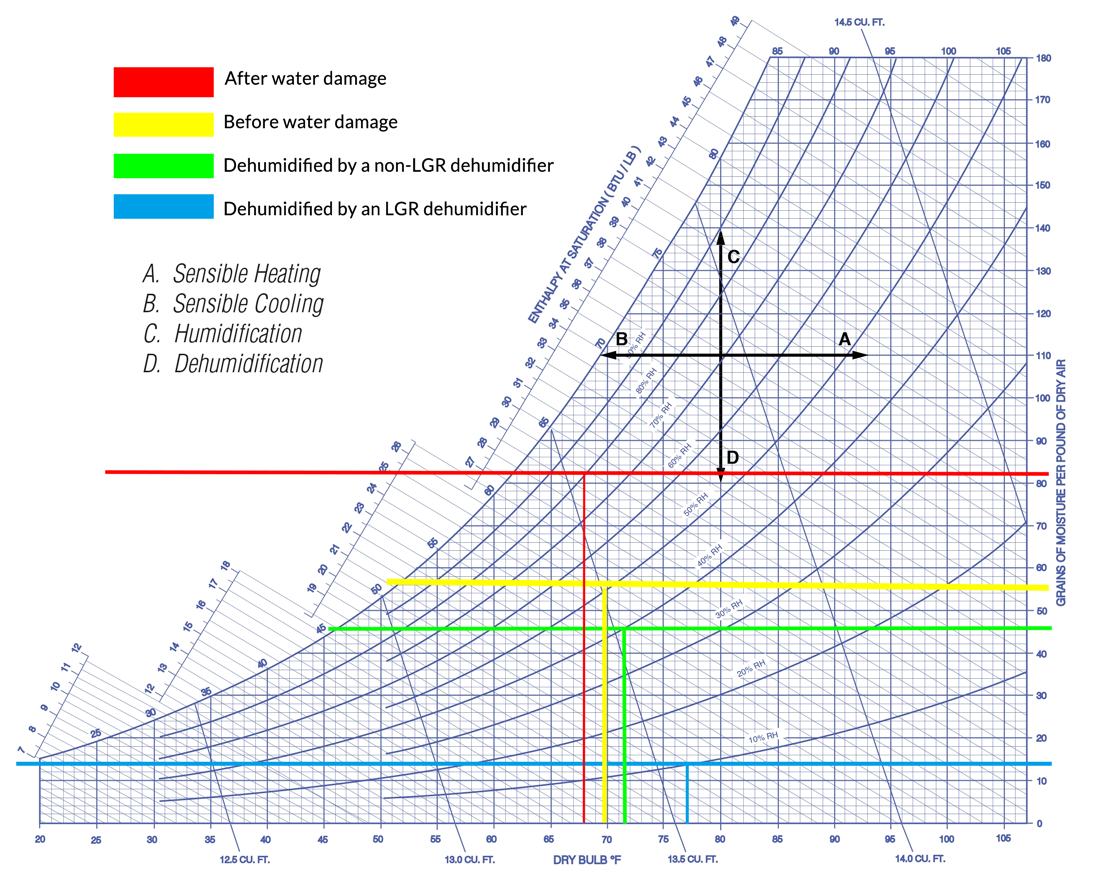Differences between LGR and Non-LGR Dehumidifiers
Non-LGR dehumidifier
At room temperature, ordinary (non-LGR) dehumidifiers can reduce the RH level of the work zone to the normal range (40% RH or 55GPP AH). The disadvantage is that after the indoor RH level approaches the normal range, they can not make RH continuously lower nor adsorb excess moisture from items.
LGR dehumidifier
LGR dehumidifiers can perform well in high-humidity environments and continue to operate in environments below 55GPP. In high-humidity environments, LGR dehumidifiers can work efficiently which helps customers save energy bills. In low-humidity environments, LGR dehumidifiers are able to deeply absorb water vapor from structures such as furniture, walls, and floors.

* 68℉(20℃)/RH80% After water damage
* 69.8℉(21℃)/RH50% Before water damage
* 71.6℉(22℃)/RH40% Dehumidified by a non-LGR dehumidifier
* 77℉(25℃)/RH10% Dehumidified by an LGR dehumidifier
What is a complete air-moving, purifying, and drying system?
An indoor air moving, purifying, and drying system is designed to improve the quality of air within an enclosed space. It typically involves a combination of different devices and technologies to achieve these goals.
Air Moving (Ventilation):
- Fans and Ventilation Systems: These devices circulate air within a space, helping to distribute conditioned air (heated or cooled) evenly throughout the room. Water damage fans also help in removing stagnant air and bringing in fresh outdoor air.
Air Purifying:
- Air Purifiers: These devices use filters, electrostatic precipitators, or other technologies to remove airborne particles, pollutants, and allergens from the air. HEPA filters, activated carbon filters, and UV-C germicidal lamps are common technologies used in air purifiers.
Air Drying (Dehumidification):
-LGR Dehumidifiers: Water damage restoration dehumidifiers remove excess moisture from the air, which can help prevent issues like mold growth, musty odors, and damage to furnishings. They work by cooling the air to condense moisture and then reheating it before releasing it back into the room.
Integrated Systems:
- Some advanced systems combine multiple functions into one unit, providing comprehensive air quality control. These systems may have features like adjustable fan speeds, humidity control, and multiple stages of air filtration.
Monitoring and Control:
- Some systems come with sensors to monitor air quality parameters such as humidity levels, temperature, and particle counts. These sensors can automatically adjust the system's settings for optimal air quality.
When designing an indoor air quality system, it's important to consider factors like the size of the space, existing ventilation, specific air quality concerns, and the level of automation and control you desire.
Post time: Nov-09-2023
 +86-13376814803
+86-13376814803  robert@hzhongtai.com
robert@hzhongtai.com 












